Behind the scenes with our Osprey nest cam
By Diane Rooney
Like many of us, you’ve probably seen – and perhaps become addicted to – the live streaming Osprey nest cam that Golden Gate Bird Alliance launched at the end of March. You may have watched Osprey parents Rosie and Richmond work on the nest and incubate their eggs, and then cheered when their two chicks hatched in mid-May.
But how did this stunning, intimate video feed from the nest come to happen?
The story of the Bay Area’s first Osprey nest cam is a saga of vision, passion, and cooperation between individuals and organizations. It’s almost as astonishing as the story of how Osprey populations have rebounded from decimation by DDT over the past 30 years!
The project was the brainchild of GGBA Executive Director Cindy Margulis, who had watched Ospreys nesting in Richmond even before joining the staff of GGBA, and daydreamed about getting a closer look into the lives of local Ospreys.
Her dream became scientifically relevant through the work of Tony Brake, a Golden Gate Raptor Observatory volunteer who has been leading a citizen science effort to find and monitor all Osprey nests on the edge of San Francisco Bay since 2013.
Ospreys had never been known to nest directly along the Bay before the 1990s. But Tony’s study, first published in Western Birds, documented a nesting trend on San Francisco Bay.
That research validated the phenomenon and meant that more insights into Osprey nesting on the Bay would help us support this exciting trend. A nest cam could create a big educational opportunity for the whole Bay Area – not just engaging avian scientists and bird lovers, but also sparking children, families, animal lovers, educators, photographers, and others to marvel at these unique raptors trying to live in our midst.
From the outset, the camera was meant to inspire learning and motivate people around the Bay to help these birds thrive by making the Bay’s watersheds and shoreline environment clean and safe.
That was the vision part. Then came the passion and cooperation.
The Osprey nest cam was a complex project involving many stakeholders, supporters, and helpers. The target site was an existing Osprey nest atop the Whirley Crane, a decommissioned World War II-era maritime crane. The crane is part of the Rosie the Riveter WW II National Home Front Historical Park interpretive footprint, but it stands next to the Richmond Museum Association’s SS Red Oak Victory ship museum and is owned by the Port of Richmond. The Whirley Crane had attracted Ospreys for several years and offered a stunning vista of the Bay and the San Francisco city skyline in the distance beyond.
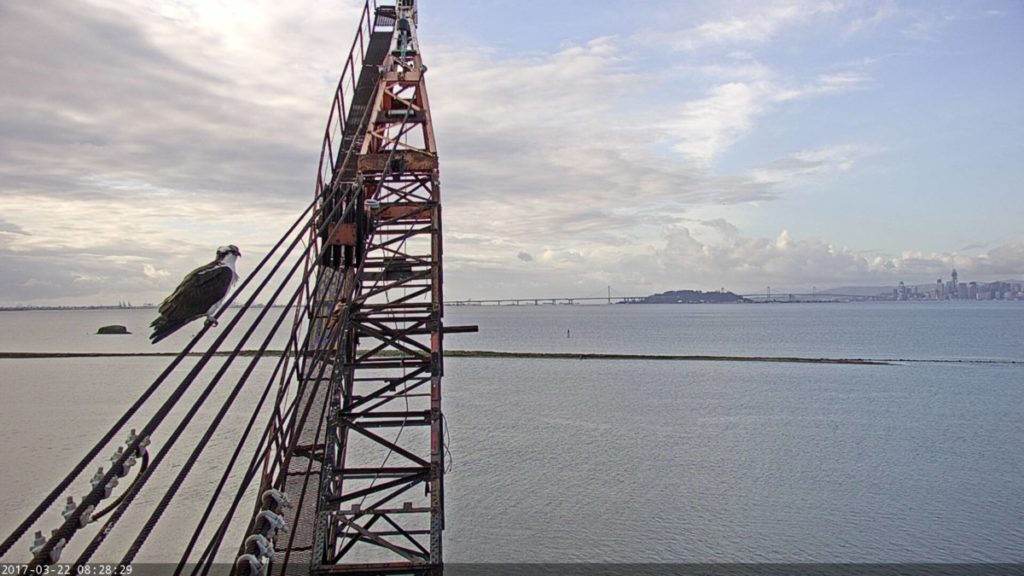
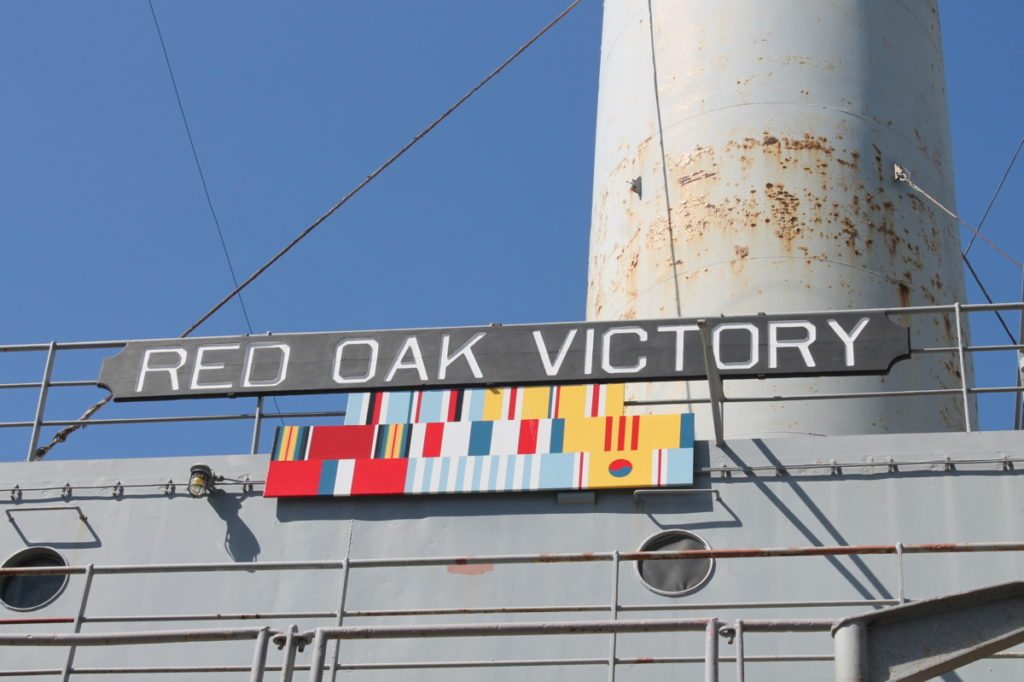
“We took a gamble,” Cindy said. “There wasn’t a nesting pair during the wintertime when we set up the cams. But we felt it was such a prime location for Ospreys that it would very likely attract a pair before spring arrived.”
Among the challenges were:
- Gaining permission from the Port and City of Richmond and the National Park Service.
- Securing access and assistance during installation from the Red Oak Victory and Richmond Museum Association.
- Choosing a provider for the high-definition live streaming capability services that met the project’s demanding set of requirements.
- Logistical coordination to install, test, and maintain cameras high on the crane.
- Building, launching, and promoting a dedicated web site to host the video feeds and all the outreach, education, and interactive functionality that’s core to the project.
- And – last but hardly least – raising funds for the whole initiative.
At the very beginning, Cindy met with Richmond Port Director Jim Matzorkis, who became a major ally. “He was a big supporter from the get go,” she said. “Not all port authorities are so eager to accommodate wildlife. But Jim was an absolutely essential ally.”
Fundraising had to begin well before the project could be launched. One of the first donors was Craig Newmark, founder of craigslist, whose seed funding gave GGBA the confidence to get started. (He made another generous contribution after he saw Richmond & Rosie on the live stream for the first time!)

The technology necessary for the project require expertise beyond the scope of GGBA.
“We didn’t know anything about webcams and streaming media, so I reached out to our allies at Oakland Zoo, Ventana Wildlife Society, and International Bird Rescue,” Cindy said. “They all recommended the exact same guy: Joe Pifer from HDonTap.”
HDonTap specializes in installing live streaming camera feeds in outdoor locations for clients such as ski resorts, zoos, and wildlife agencies.
But managing such a complex project would require production expertise too. So, Cindy recruited seasoned film producer and wildlife photographer extraordinaire John Ehrenfeld to serve as the project manager on a pro bono basis.
The set-up that was ultimately chosen included a number of features that place it at the leading edge of wildlife cams:
- Utilizing two high-def cameras to provide both a close-up and a wider-angle view.
- The ability to control the cameras remotely using pan, tilt, and zoom functionality.
- Infrared illumination so the nest can be observed at night without disturbing the birds.
- Audio, so viewers can hear the voices of the Ospreys as well as the ambient soundscape of the Bay.
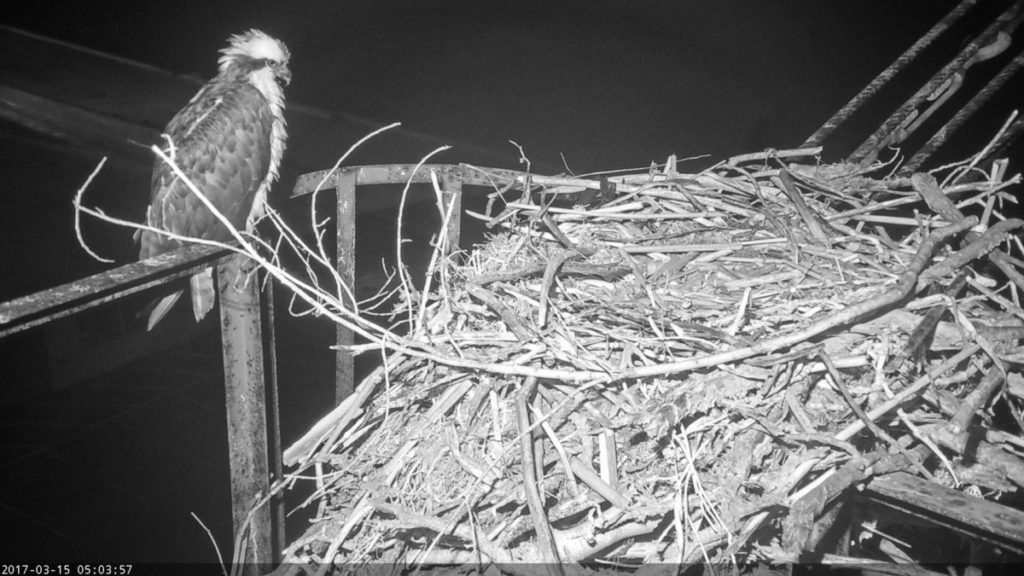
The cameras would be positioned to show the nest from opposite angles, with the ability to pivot to show the Bay environment and the horizon. Even without Ospreys on the nest, it was a stunning view of the Bay!
Because the Whirley Crane is an historical artifact, GGBA could not drill into the crane or permanently mar the crane. Instead, wooden masts needed to be clamped unto the crane and camera housing would be drill-mounted onto each wooden mast, not to the crane itself.
It was clear to the organizing team that safely installing the wide-angle camera high up on the boom would require a secure bucket lift with a reach of 100+ feet. But who uses that kind of equipment?
“We asked PG&E, which has been a longtime supporter of our Eco Education program, if they could help,” said Cindy. “They graciously agreed to lend us a top-flight crew with a unique piece of equipment: a telescoping bucket truck with a lift range beyond 100 feet, their only one in all of Northern California. They said that, weather permitting, we could have one day of their crew and the equipment to accomplish the boom camera install. Then Joe and PG&E’s terrific crew managed to get it done!”
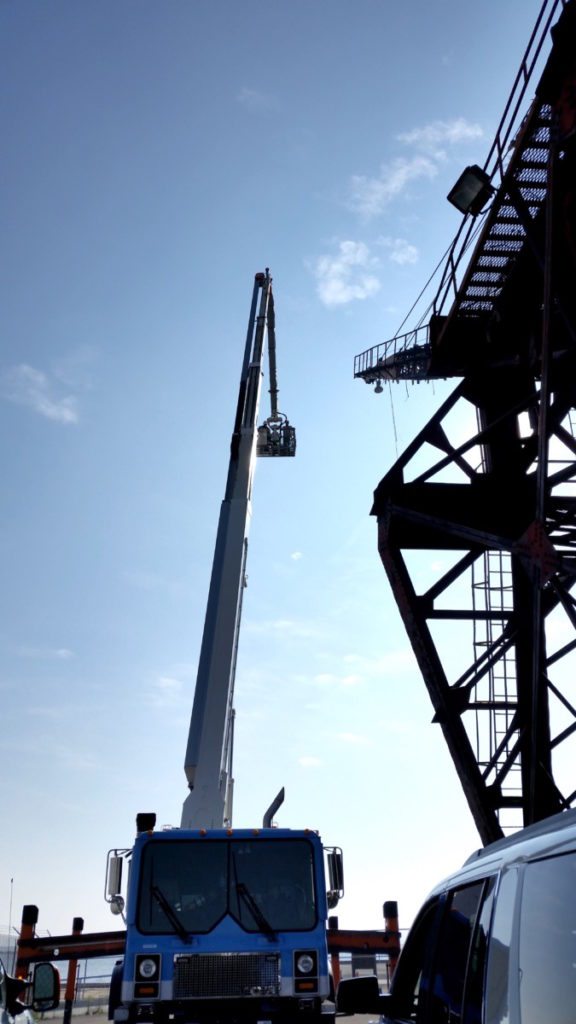
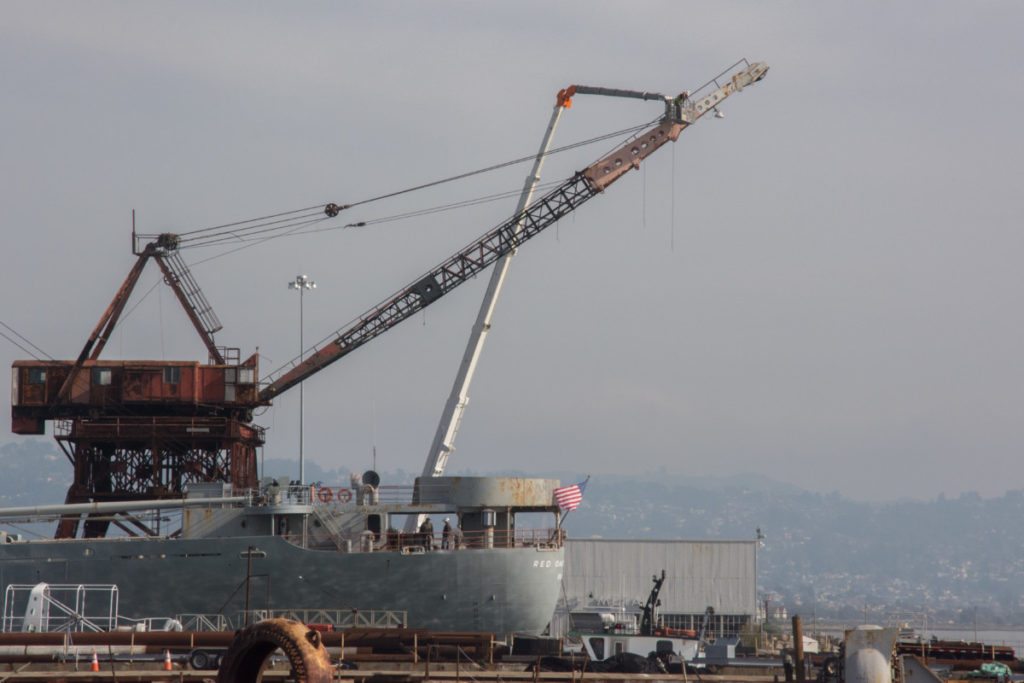
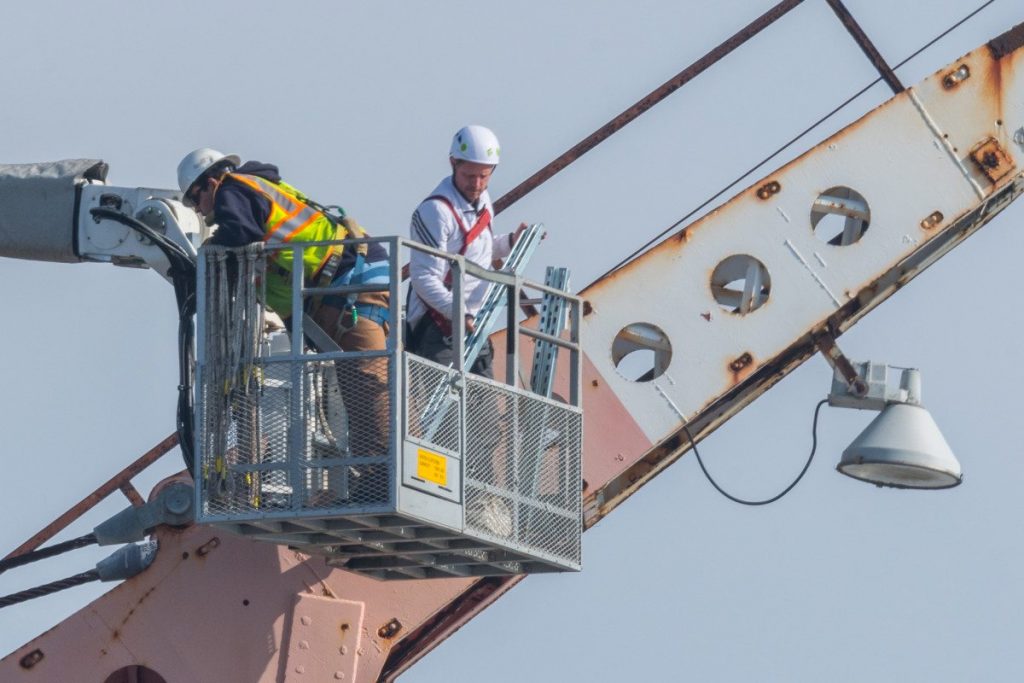
The cameras were painted to blend in with the Whirley Crane. One is housed in a specialized enclosure with its own windshield wiper, since access to it is so limited. Both cameras were installed over a three-day period in late January, one of the rainiest Januaries in twenty years. Tony Brake – who in addition to his Osprey research is an experienced climber – assisted Joe during the installation.
“That is a rather challenging environment,” Cindy said. “We had to install the cameras before the birds got there, but in between two of the more intense torrential rainstorms in January.”
The nest cam team of Cindy, John, Joe, and Tony observed the early season activity over the web for several weeks before the web cams were announced to the public. They were delighted when a local male Osprey – subsequently named Richmond – staked out a claim and started spending time on the Whirley Crane and beckoning a female from the nesting spot. They were further thrilled when a migratory female – named Rosie in honor of the Rosie-the-Riveters who built Victory ships in Richmond during World War II – joined him and they paired up.
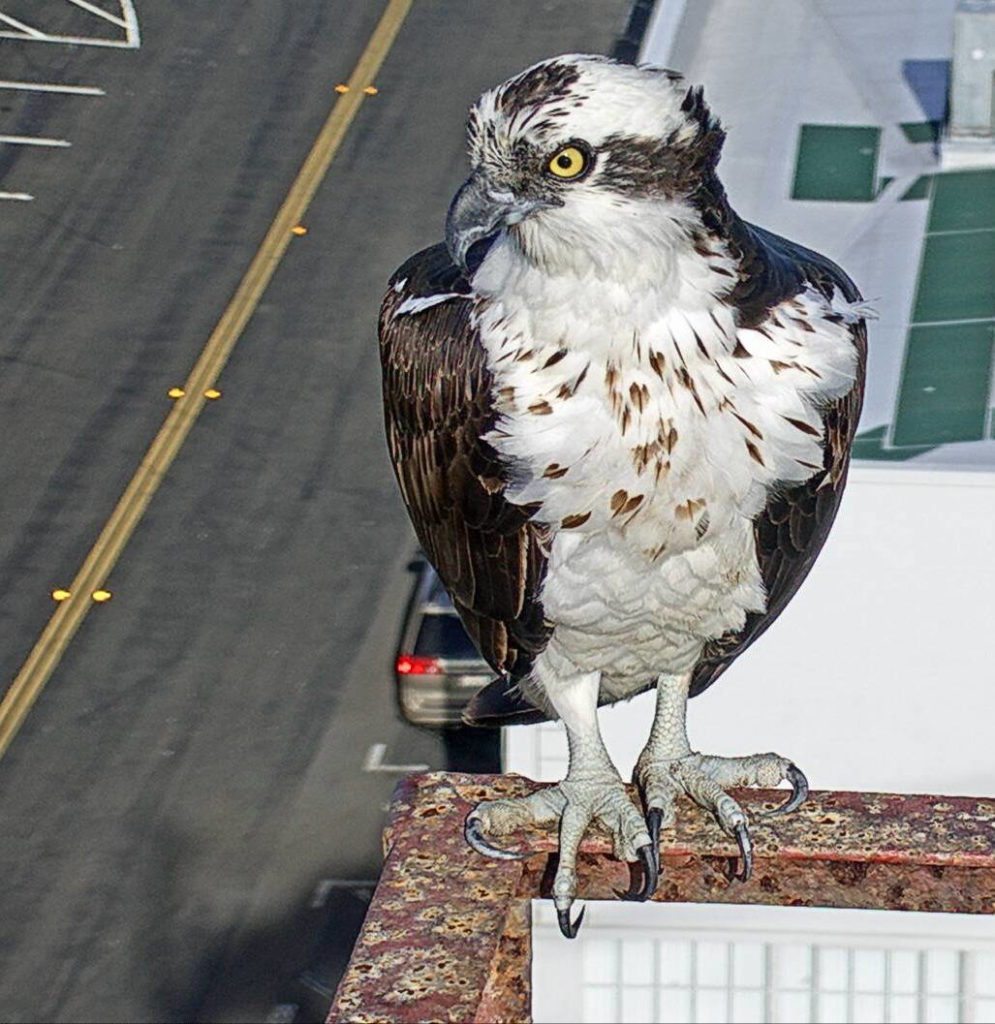
March 29 was the Big Day! The public launch featured a press conference with a video slide deck at the Port of Richmond’s offices at Riggers’ Loft. Richmond Mayor Tom Butt spoke about his enthusiasm for these winged ambassadors who would remind people of the beautiful and historically important sites on the shoreline of his city. All allies of the project were represented, including Ranger Elizabeth Tucker from the National Park Service and two of the original Rosies who’d worked in Richmond’s shipyards in WW II. Board members and crew from the SS Red Oak Victory were on hand and graciously offered tours of the vessel for all the guests and media. KCRT, Richmond’s public access cable channel, provided a big screen and audio services for the festive event.


The launch of the camera and the website generated great media coverage in both print and broadcast media. (Click here or see the bottom of this blog post for a short video with interviews from the public launch day.)
Cindy offered enthusiastic praise for the City of Richmond partners: “Every entity in Richmond provided warm encouragement, support, and great cooperation. That whole neighborhood in Richmond’s shipyards embraced the project. The way these Ospreys have been welcomed and become so adored in Richmond is beyond my wildest dreams!”
In the first six weeks since the nest came went live, over 33,000 people visited the web site at sfbayospreys.org to view the Osprey family. Viewership surged further when the two chicks hatched on May 12 and 14.

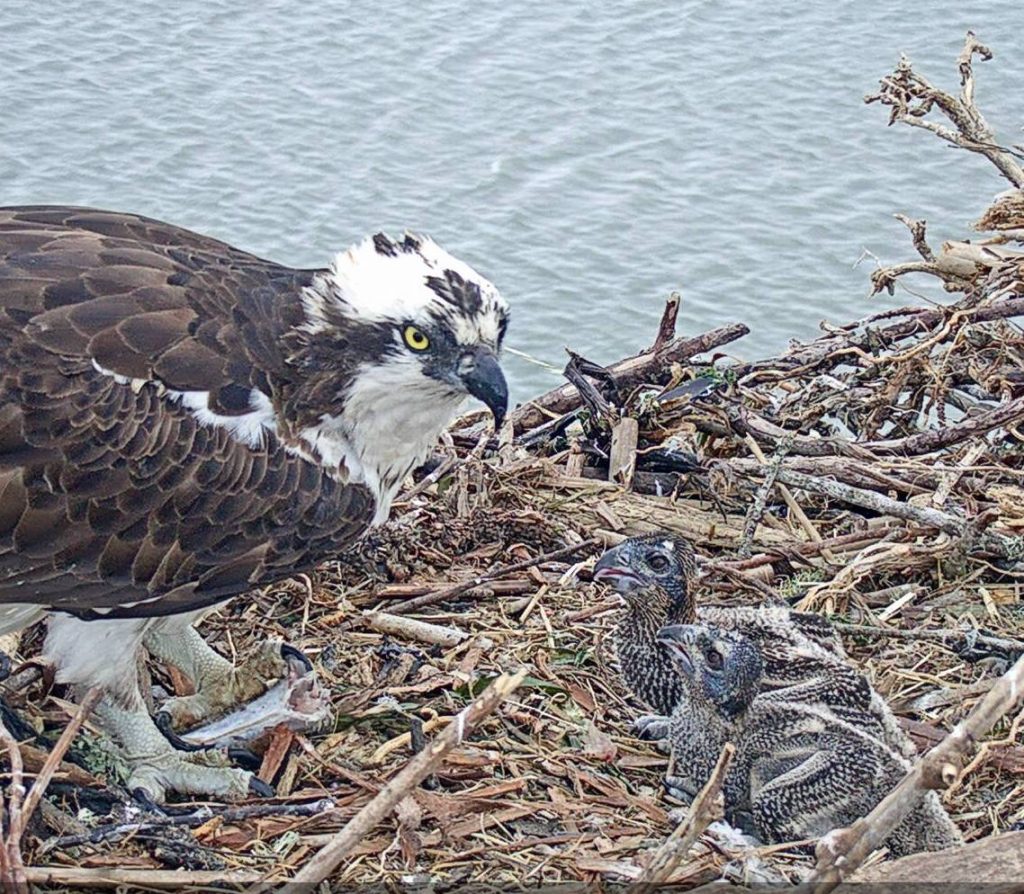
In keeping with the vision for the project, the web site is much more than just a place to see the live stream. Education has always been fundamental to the project . There’s a whole section on the site about how to help Ospreys, with information about recycling fishing line, restoring habitat, and providing safe nesting platforms. There’s a live chat page where people ask questions and share observations about the Osprey family.
There’s also a page for schoolteachers, who can register to download a series of free standards-based lesson plans for grades 6-12 that use the Osprey nest cam to inspire STEM (science-technology-engineering-math) learning for students all over the Bay Area.
In addition to the web site, the project has a Facebook page at facebook.com/bayospreys/. The video feed from the nest can even be watched on a big screen at the Riggers’ Loft Wine Co. tasting room, located by the Whirley Crane!
The many partnerships are one of the things that has made this Osprey Camera so special. Another is the intentional focus on inspiring people to become stewards of our wildlife and habitats, and on igniting students’ interest in STEM through vibrant lessons that connect them to local wildlife and ecology.
In organizing this massive effort, Golden Gate Bird Alliance never lost sight of its core mission, now 100 years old but as relevant as ever: Connecting people to wildlife and translating their wonder into actions that protect our local birds and their habitats.

“Everyone can relate to a family – the dorky dad with a strange collecting impulse, the rambunctious kids who get too close to the edge,” Cindy said. “The amount of affection and love for these birds is absolutely heart-warming. When you love something, you understand the need to take care of it. We want to translate the marvelous excitement for wild Ospreys into stewardship actions that help Ospreys and all our Bay birds to thrive so we can be thrilled by them always.”
Diane Rooney is a member of Golden Gate Bird Alliance, a seasonal hawk watcher at the Golden Gate Raptor Observatory, and a regular speaker at Mare Island Osprey Days. She attended Audubon’s “Raptor Rapture” 5 day course at Hog Island, Maine in 2014 and 2015.
Want to support the Osprey nest cam? Click the button to make a tax-deductible contribution:

